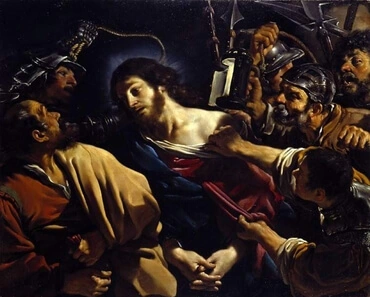Explanation of John 1:10
By Brian David

The beginning of John 1 illustrated how divine truth – which is the ultimate expression of the Lord’s love – is the actual creative force of the universe and of reality itself. That idea is reinforced here: "him" refers to Jesus, who was the physical embodiment of divine truth, which indeed made the world.
This verse offers another level, though. "World" represents the church, which is defined in the Writings as "where the Lord is known and where the Word is." By that definition a "church" can be as small as one person, or as large as billions of people worshiping through a wide variety of denominations. And the Writings tell us that the Lord has made sure that such a church always existed, from prehistoric times when the Lord offered "the Word" – His truth – to people directly up through today, when we have the Word in the form of the Bible.
But the world did not know him. At the time the Lord came among us as Jesus, people had turned away from the deeper meanings of the Word (which they then had in the form of the Old Testament), and had little to no concern for knowing the Lord. His church – the church among the Children of Israel – had turned away.
This might seem like a merely historic idea, something that happened then but has little to do with us now. But each one of us is a "church," and each one of us can know the Lord and the Word, or turn away. We all go through states when we are like the church at the time the Lord was born, and He can rebuild us now even as He rebuilt the church then. For that to happen, though, we need to turn to the Word – the Bible – and know the Lord.
(References: Apocalypse Explained 1093; Canons of the New Church 9; The Apocalypse Explained 294 [16])
Arcana Coelestia #2400
2400. 'He spoke to his sons-in-law who were marrying his daughters' means together with those governed by truths to which affections for good could be allied. This is clear from the meaning of 'sons-in-law' as cognitions of truth, and consequently truths, dealt with above, in 2389, and from the meaning of 'daughters' as affections for good, also dealt with above, in 2362. And because it is said that he spoke to his sons-in-law who were marrying his daughters, the meaning is, together with those governed by truths to which affections for good were able to be joined. Because those affections could be so joined the expression 'his sons-in-law' is used, but because they had not actually been joined the expression 'who were marrying his daughters' is added.
[2] Here the subject is a third group of persons inside the Church, that is to say, those who have knowledge of truths but nevertheless lead evil lives. There are in fact three groups of people inside the Church:
1. Those in whose lives the good of charity is present; these are represented by 'Lot'.
2. Those who are immersed completely in falsity and evil, and who repudiate both truth and good; these are represented by 'the men of Sodom'.
3. Those who do indeed have knowledge of truths but nevertheless lead evil lives; these are meant here by 'sons-in-law'.
The last of these are chiefly people who teach, but the truth which they teach sends its roots down no more deeply than knowledge solely in the memory is accustomed to do; for it is learned and displayed by them solely for the sake of position and gain. And because with such people the ground in which the truth is sown is accordingly self-love and love of the world their belief in truth is no more than a certain persuasion, resulting from those loves. The nature of that persuasion will in the Lord's Divine mercy be spoken of elsewhere. Here they are described as the sons-in-law who did not believe a thing about the overthrow of Sodom but laughed at the idea. And the faith within their heart is also of that nature.






